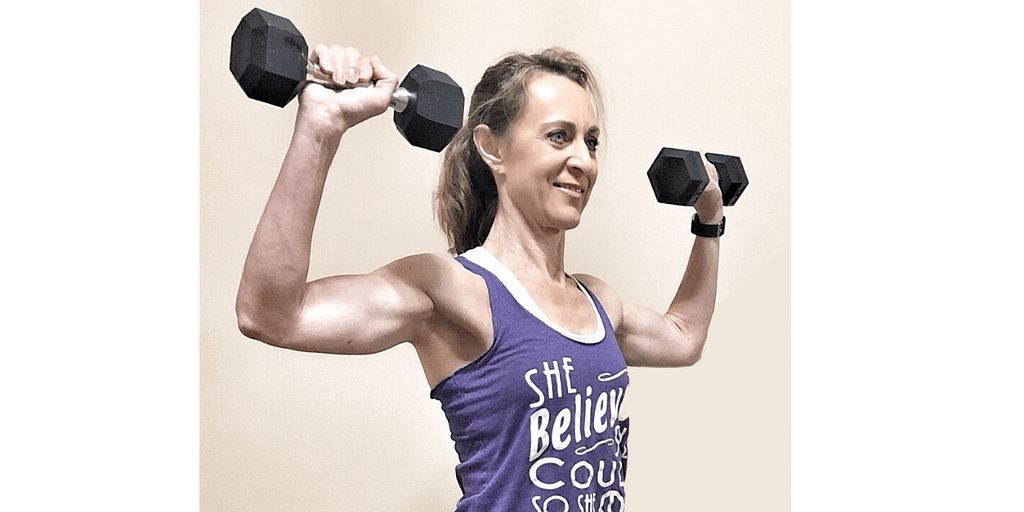
Not sure why you need a strong body? Think you're too old, too out of shape to start now?
This is a common misconception. So, let me start by saying, you are NEVER too old or too out of shape to get started. EVER!
In this post, I’ll share the secrets to a strong, healthy female body, the importance of strength training and how you can get started today!
If you’re new to my blog, Welcome! I’m so glad you are here. My goal is to provide you with tips that help you stay strong and active as you age.
Here are some of my other blogs to check out after you read this one.
Let's define a Strong, Healthy Female Body
While this will be different for everyone, in general, a strong, healthy body is one that is free of disease, physical pain and has the strength needed for all the activities you wish to pursue.
Your activities may be running errands, going to work, climbing stairs or if you’re more adventurous it may include hiking, skiing, running, sightseeing, dancing, tennis, soccer and, of course, chasing your kids or grandkids.
Regardless of your preference of activities, you’ll want to have the physical strength that allows you to participate, right?
Want to see how fit you already are?
Push up Test
# of pushups by age for "good" fitness rating
You can do these on your knees or toes. With a strong back and core and hands a little outside shoulder width, lower your chest toward the floor.
Try to get within an inch of the floor and then return to starting position. See how many can you do before you need to stop.
If you haven’t done a pushup in years, you may only be able to do one or maybe you can only go down a couple inches, that’s ok. Just do what you can.
For a fitness rating of good, women over 55 should strive for 10.
If you aren’t at the recommended number, no worries. Now, you have a goal to work toward.
women over 35 — 19
women over 45 — 14
women over 55 — 10
women over 65 — 10
Sit up Test
# of crunches in 1 minute for "good" fitness rating
Laying on your back with knees bent and feet on the floor, cross arms across your chest, lift head and shoulders off the floor and back down.
Although this is called a “situp test”, you are not doing a full situp. You only want to crunch up far enough to lift your head, shoulders and upper back off the floor. Feel a nice squeeze in your abs and release back to the floor.
Keep your head neutral. In other words, make sure you have enough room between your chin and top of your chest to place your fist.
Count how many you can do in 1 minute.
women over 35 — 30
women over 45 — 25
women over 55 — 21
women over 65 — 12
How did you do? Write down your results and keep them handy. After you’ve followed a strength training program for a few weeks (say, 6 – 8 weeks) you’ll want to re-take the fit test and see how you’ve improved!
It’s NOT about where you are today, it’s about where you will be in 6-8 weeks.
Are you ready to get a Strong, Healthy Female Body?
9 Benefits of Strength Training your way to a Strong, Healthy Female Body
The benefits of strength training are numerous. Here are a few of them.
- Without a doubt, preventing the natural loss of muscle is a key benefit. We start losing muscle mass as early as age 30 and more significantly by age 50.
Should you care about losing muscle mass? I say, YES!
2. Building muscular strength allows us to continue everyday activities like lifting the grocery bags out of the car, reaching for the top shelf, and carrying luggage through the airport.
3. While we are gaining muscle mass, strength training also helps reduce body fat.
4. Taking preventative measures now with strength training will pay off as we get older, with increased bone density and a lower risk of osteoporosis.
5. Did you know muscle burns more calories than fat? So, by building muscle, you are also keeping the excess weight off.
Your muscles are burning calories even when you’re not working out!
6. Muscle also helps improve your balance which becomes increasingly important as we age and are at a greater risk of falls.
7. Strength training is also known to help reduce signs and symptoms of some chronic conditions like arthritis, obesity, depression and type 2 diabetes.
8. We all want more energy, right? Exercise including strength training boosts energy levels and improves mood through elevated endorphins.
9. If for no other reason, strength training may enhance your overall quality of life and improve your ability to do everyday activities. For me personally, my number one goal is to stay active for as long as humanly possible; therefore, I am a diehard fan of strength training.
If you’re ready to give it a try, here are some of my favorite exercises. These are great for beginners as well as the experienced weight lifter.
Beginner Exercises for a Strong, Healthy Female Body
Always warm up with 5 – 10 minutes of brisk walking, or any form of cardiovascular movement to get your heart rate up.
Although there are tons of exercises you could be doing, in this blog, I will focus on one exercise per major body part.
Upper Body Exercise - Bicep Curl
Standing tall with arms by your sides, keep your elbows touching your sides as you lift your hand, palms facing up, toward your shoulder and back down.
Start with no weights in your hand. Concentrate on squeezing your bicep muscle as you lift your hand toward the shoulder.
Exhale as you lift arms up and inhale as your arms lower.
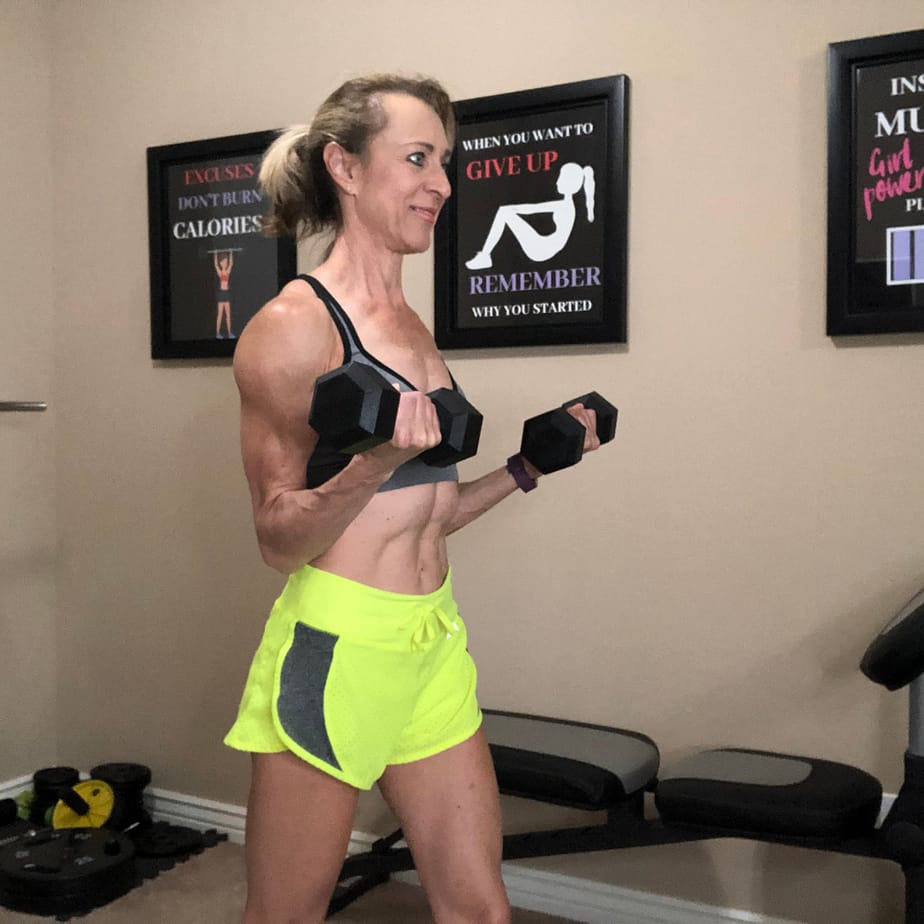
Upper Body Exercise - Single Arm Tricep Kickback
Standing, step one leg forward and bend over slightly. You can rest one hand on your front leg. Start with your opposite arm down by your side.
Lift arm to 90 ° angle with elbow touching your side and palm of your hand facing in toward the center of your body
Lower arm down and behind you, squeezing the back of your arm (tricep muscle) and back to starting position.
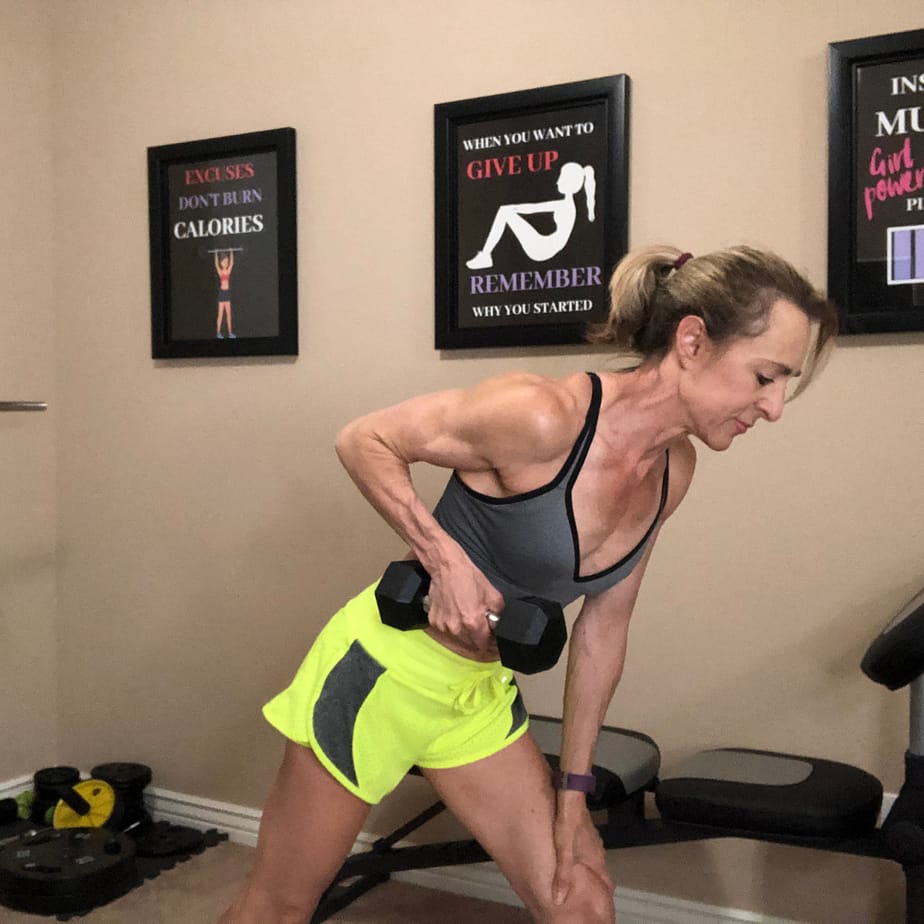

Upper Body Exercise - Shoulder Press
Standing, bend elbows bring both arms up to shoulder height with elbows at 90 ° and palms facing forward. Press arms overhead and back down.
Exhale as you push the weight up. Inhale on the way down.
Keep your core tight (squeeze your abs and glutes) so that you don’t lean backward. If you have a mirror, check to make sure your back stays flat.
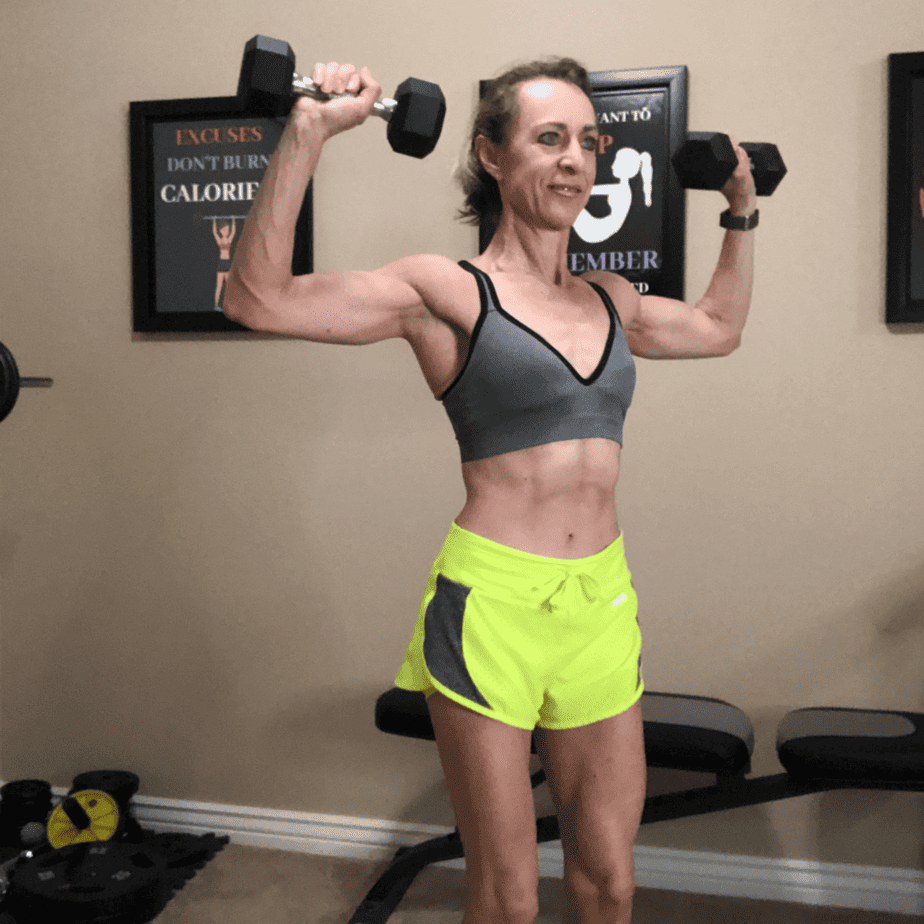

Upper Body Exercise - Chest Press
Laying on your back on the floor. Bring arms to 90° at chest level, with palms facing toward feet. Press arms up over chest, bringing hands to near touching at the top and back down stopping before your elbows touch the floor.


Upper Body Exercise - Back - Lat Pulldown
You can do the lat pulldown with a band or with arms only. To get a good feel of the muscles working, do a few without a band. This way you can really concentrate on squeezing your back as you lower your arms.
Standing, bring both arms up overhead, squeeze your back as you lower your arms to shoulder level and back up.
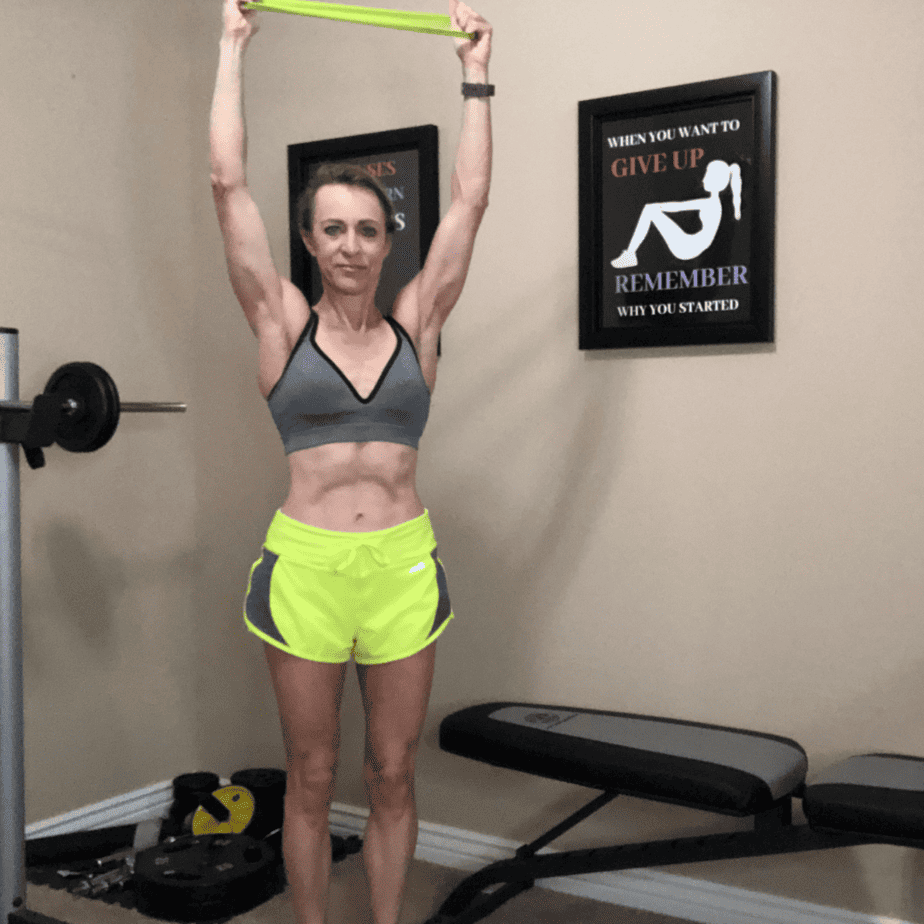

Lower Body Exercise - Quads - Wide Stance Body Squats
Standing with feet wider than shoulders, toes slightly pointed out, grasp hands in front of body, bend knees and lower body toward floor keeping back straight and glutes pointing toward the floor. Squeeze your glutes (butt) as you stand back up.
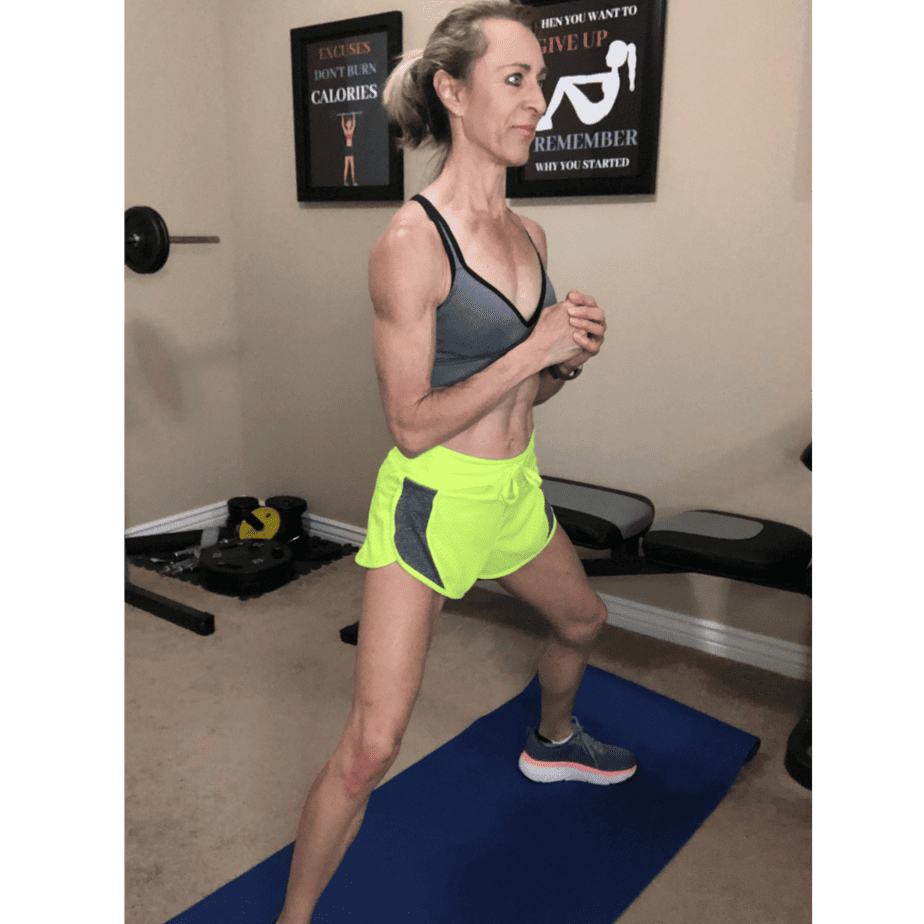

Lower Body Exercise - Hamstrings - Deadlift
Standing, with arms holding dumbbells, palms facing your body, and knees slightly bent, bend at the hip keeping back flat until your hands are near shins and you feel a slight tightness in your hamstring (back of your leg) and return to standing.
Squeeze your glutes as your rise.
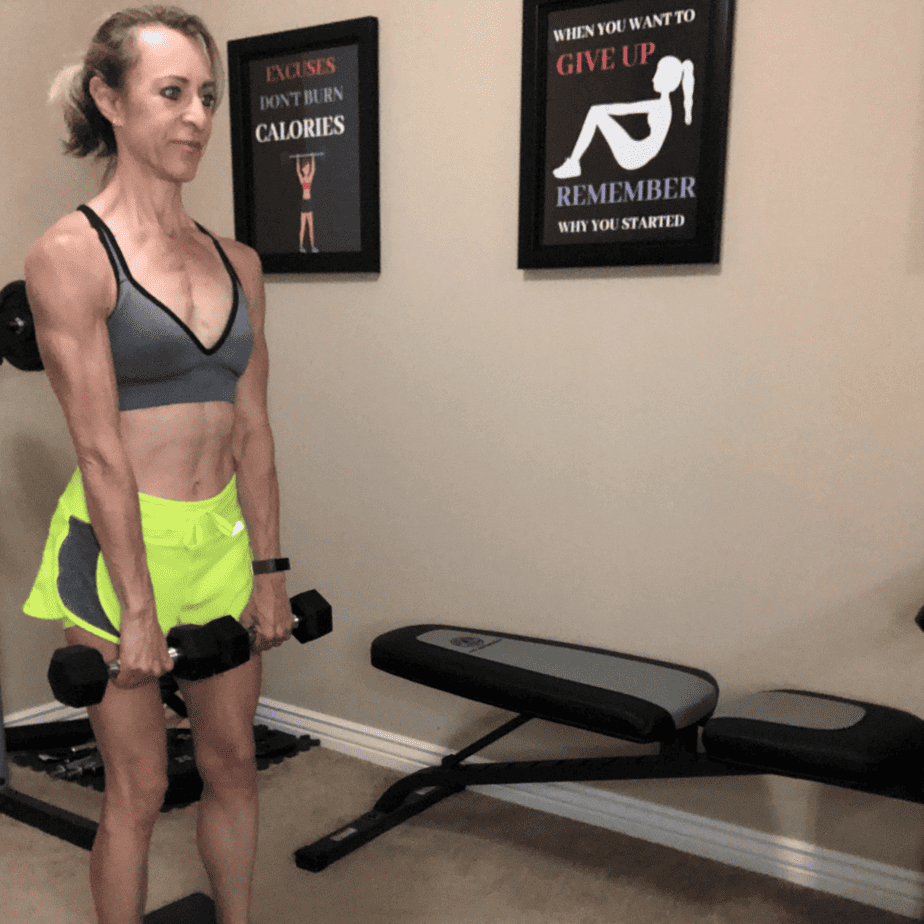

Core Exercise - Abs - Plank hold
On the floor, start on your hands and knees. Lower arms so that you are resting on your elbows and forearms. Elbows should be directly below your shoulder. You can stay here or walk your feet out so that you are on your elbows and toes.
Hold for 15 seconds. Gradually increase as you get stronger.


Creating a Fitness Plan for a Strong, Healthy Female Body
So, now you have some exercises to get started. You may be wondering how often should I do these, when do I add weights, how many reps, how much weight? Am I right?
If you're just getting started...
Here are some recommendations to get you started.
– One set of each exercise. A set is one round of the exercise without resting.
– Each set should be 10 – 15 reps. (ie. 10 – 15 bicep curls = 1 set)
– Use body weight only – focus on how to do the exercise properly before adding any additional weight.
– Follow this plan 3 times a week with at least one day of rest between workouts, preferably with no more than 2 rest days in between workouts. For example, Mon, Wed, Fri or Tues, Thurs, Sat
If you have some experience with strength training...
– Three sets of each exercise. A set is one round of the exercise without resting.
– Each set should be 10 reps. (ie. 10 bicep curls = 1 set)
– Use a dumbbell that allows you to get 10 reps with good form.
– If you choose to workout more than 3 days a week, split the exercises into 2 or more groups so that you aren’t working the same muscle 2 days in a row.
– An example workout might be Biceps, Triceps, Shoulders, Abs in one group and Chest, Back, Quads and Hamstrings in another group.
– Mix them up and see which exercises you like doing together. It’s all your personal preference.
